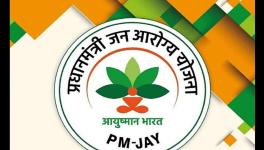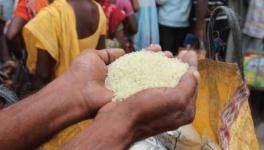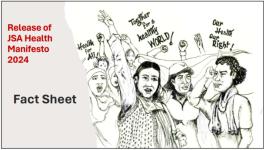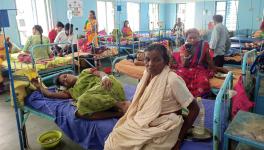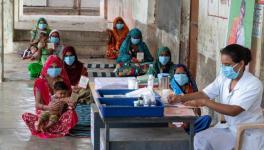Will NITI Aayog’s Proposed PPP Model Make District Hospitals Inaccessible for the Needy?
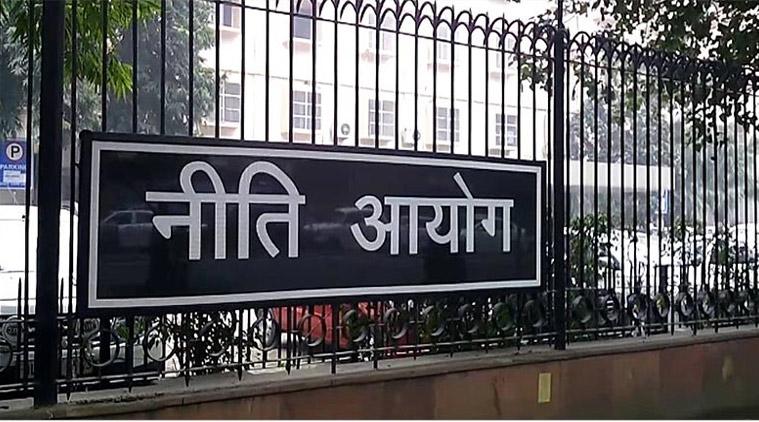
Image Courtesy: The Indian Express
In December 2019, NITI Aayog released the draft “Model Concession Agreement for Setting Up Medical Colleges Under the Public Private Partnership” guideline document, proposing that public-private partnerships should be implemented to address the shortage of qualified doctors and bridge the gap in medical education. The proposal, as laid out in the document on NITI Aayog’s website, entails providing “exclusive right, license and authority to augment, operate and maintain the District Hospital and provide Healthcare Services and design, finance, procure, construct, operate and maintain the Medical College (the ‘Concession’)” for a minimum of sixty years as per terms and conditions set in the model agreement.
People’s Health Movement India — the Jan Swasthya Abhiyan (JSA) — a platform of networks and organisations fighting for people’s right to health and universal access to healthcare in the unprecedentedly privatising ecosystem of healthcare and medical rights, has called this model a cause of great concern. They said in a statement, “We are entering an era of the transfer of public assets to private hands for private profits, with government earning a share of such profits. This is a dangerous and ideologically driven proposal with no rationale or evidence base to support it. This proposal is against the recommendation of every national expert committee or policy statement or policy committee that has ever been constituted, though it is in line with a few international consultancy/expert proposals and recommendations. This in itself is a matter of great concern.” The proposal provides only a brief justification for introducing this scheme. It states, “India has a dire shortage of qualified doctors. It is practically not possible for the Central/State Government to bridge the gaps in the medical education with their limited resources and finances. This necessitates formulating a Public Private Partnership (“PPP”) model by combining the strengths of public and private sectors. Accordingly, a Scheme to link new and/or existing Private Medical Colleges with functional District Hospitals through PPP would augment medical seats and also rationalise the costs of medical education.”
However, JSA has rejected this justification, saying that there is no reason to believe that the proposed scheme will address these issues at all. Ironically, this scheme could worsen the public healthcare situation in India, which is already in shambles, as it is clear from the proposal that the scheme has been drawn up to provide an avenue for corporate investments and profits in health care. JSA said, “There is also a further implicit aim to re-shape the health sector as a sector that runs along the lines of corporate industry, with profit maximisation rather than health outcomes as its goal. The whole proposal is violative of the spirit of universal health care. It also violates the government’s own National Health Policy of 2017- which promises free drugs and diagnostics and free care for all in the public hospitals, and prioritizes building up of public hospitals and engagement, and secondarily with not for profits for fulfilling all secondary and tertiary health care needs.”
The introduction to the guidelines states that there is a dire shortage of doctors, which is not completely true. Rural Health Statistics (RHS) 2018 shows that while on the one hand, several states like Bihar, Uttar Pradesh and Jharkhand have an acute shortage of doctors, on the other hand, several states also have a surplus of doctors. JSA says, “Moreover, no differentiation is made in this rationale on the availability of general physicians, specialists or super-specialists… Some states should in fact be calling for a freeze in expansion of private medical colleges. At no point is there any indication of prioritization of states and regions such PPPs must come into being.”
FREE HEALTHCARE, BUT NOT FOR EVERYONE
One of the main causes of concern about this scheme is the fact that under it, the patients will be divided into two categories, “free patients”, and all others. Clause 22.1.2 of the agreement states:
“The Concessionaire shall provide Healthcare Services in accordance with Schedule P
to the following category of Patients:
(a) Free Patients; and
(b) All Patients other than the Free Patients.”
Concessionaire refers to the agency that will be awarded the contract to run a district hospital. Clause 22.2 of the agreement states that to be a “free patient”, one would need a specific authorisation certificate from a district health authority. It says, “Any Patient issued an Authorisation Certificate will be deemed to be a Free Patient entitled to avail Healthcare Services in accordance with the terms of this Agreement. Any Patient approaching the District Hospital for availing Healthcare Services and seeking to be treated as a Free Patient must procure from the Authority's designated officer an Authorisation Certificate in accordance with this Clause 22.2.”
JSA has said that this division of patients into two categories based on their ability to pay goes against both national policy as well as international commitment of the country towards universal healthcare. It also pointed out, “Such “means testing” before the provision of free services (as proposed in this agreement) has been shown in the literature from all over the world to reduce access to deserving persons.”
As per the agreement, the free patients can be provided free consultation, free drugs and diagnostics, but even they would have to pay a Rs 10 registration charge. As stated in the clause 29.3, All other patients would be charged at “market competitive rates”, and in fact, the hospital “shall be entitled to demand, charge, collect, retain, appropriate Hospital Charges, based on market competitive rates”. However, there is some obfuscation around the charges for OPD, since in some paras, it states that hospital charges will be as per Schedule S, while in another it states that out-patient care is free.
Under this scheme, all in-patient beds will be categorised into “Regulated Beds” and “Market Beds”. For the regulated beds, treatment will be provided free of cost; while for the market beds, treatment will be provided at competitive market rates. According to the agreement, each district hospital operating under the PPP will have at least 750 beds, and out of the total number of beds, 300 plus 20% of the remaining beds will be for free patients, and the other bed will be market beds. So, if there are 900 beds in a district hospital, 480 would be market beds and 420 would be regulated beds.
However, the regular beds are implicitly for patients who are already covered under the AB PMJAY or other government insurance schemes. So, even though it is stated as free care, payment for most of the free patients will come from the government. JSA said, “Therefore, any impression given in this model agreement that the private entity would be providing completely free services to a proportion of patients in lieu of the concessional treatment is false. Further, there is a clear emphasis that these free beds will allow patients required for teaching/training purposes to be admitted.”
FOR THE PROFIT OF CORPORATES
The government proposes to hand over the hospitals at an extremely low fee with additional grant in the form of equity. The “concessionaire” has to pay Rs one crore with an annual increase of only 5% for the first seven years and subject to a gross ceiling of 50% of Gross Revenue. For the subsequent years, one 1% of the revenue would be shared with the authority. According to JSA, “These rates are extremely low and allows “concessionaire” to show lower revenue earnings in its balance sheet and pay even less. There is no mention at any point of health outcomes that can be expected in the revenue sharing agreement. It is clear that no such performance indicators are expected.”
JSA added, “The proposed payment mechanism also allows the agencies to maximise earnings by rejecting the most difficult cases which are costlier to treat and also deny treatment to free patients or regulated patients and only cater to low cost, secured cases for people who are willing to pay higher fees. This payment system would accentuate some of the typical problems of crème skimming that the private sector is so typically characterised by. It also creates possibilities of exclusion of most needy and deprived section of patients for whom the last resort is to seek treatment at the district hospital.”
Get the latest reports & analysis with people's perspective on Protests, movements & deep analytical videos, discussions of the current affairs in your Telegram app. Subscribe to NewsClick's Telegram channel & get Real-Time updates on stories, as they get published on our website.










